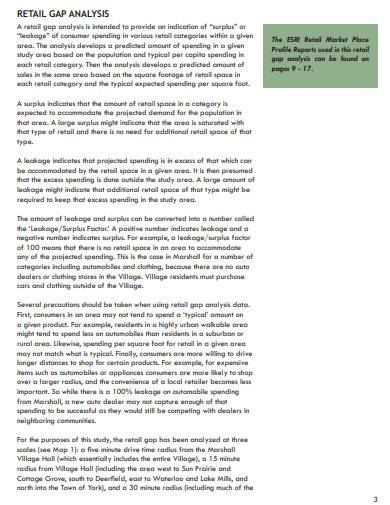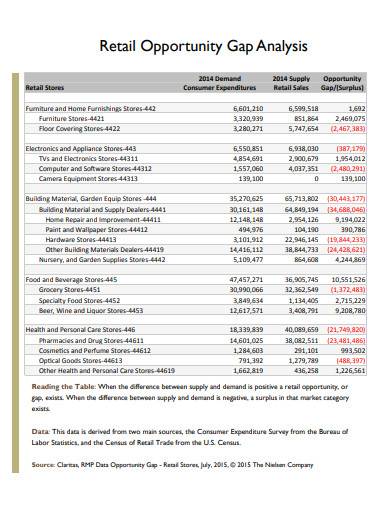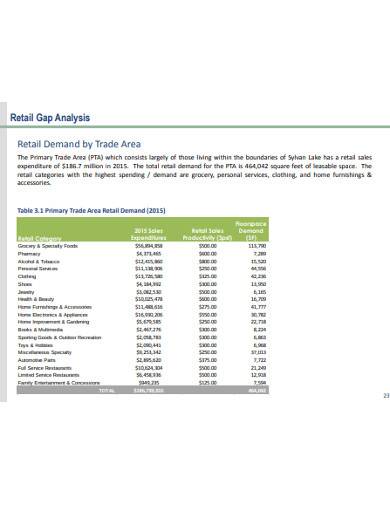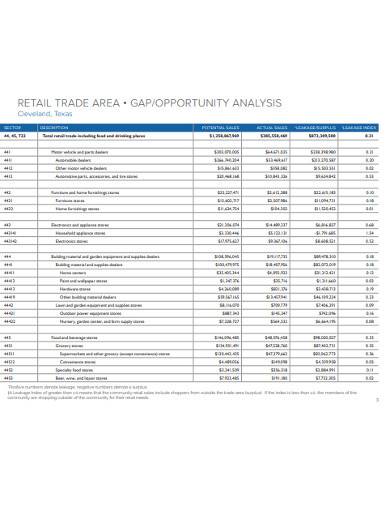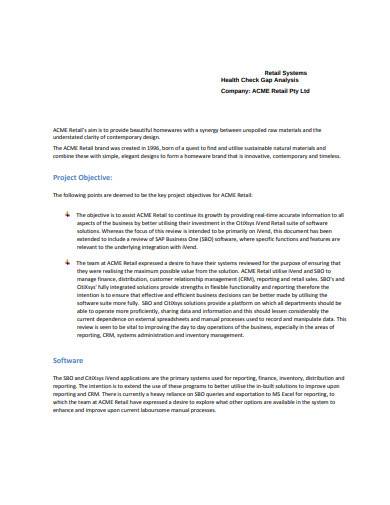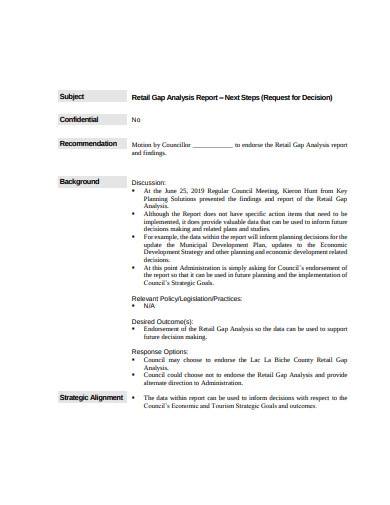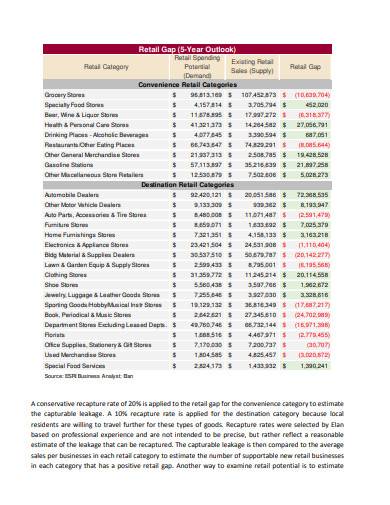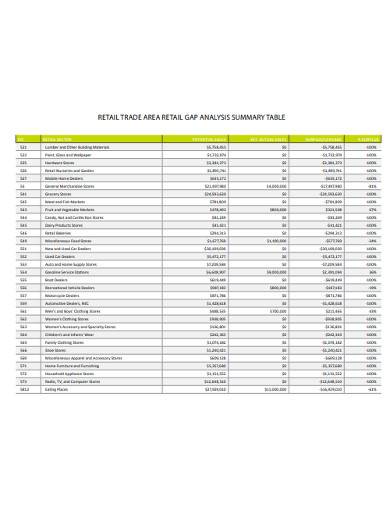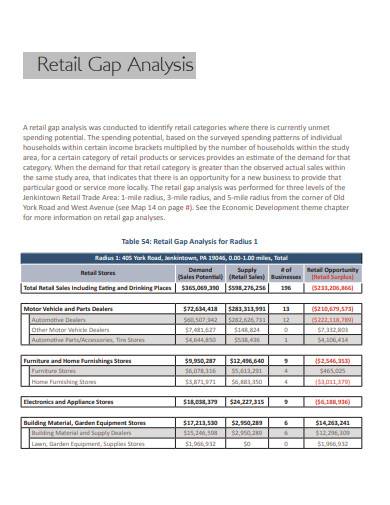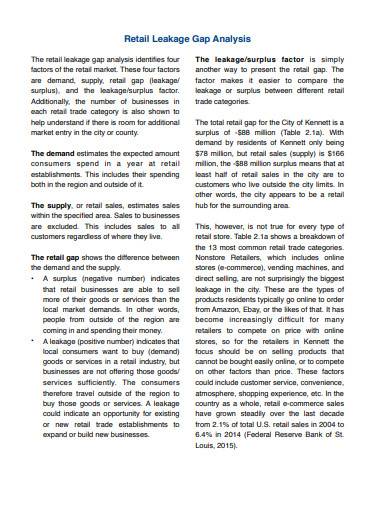With the vastness of the entrepreneurial zoo, retail has gradually turned into a biome of its own. In this smaller—yet just as vicious—jungle, the rules of business still apply. However, people still don’t give retail more credit than it has as it’s portrayed to be a more as most are stuck in the “size matters” mindset. What they fail to see is that despite the difference in volume, retail businesses and major corporations all utilize various documents such as budget plans, contract agreements, and even gap analyses.
What is a Retail Gap Analysis?
Whether the business is big or small, selling digital products or real estate, they want to attain their goals. The objective of every business plan is to push the business forward with more ideas, better quality, and a happier target market. However, with the inevitable factor that is unexpected problems, not every set milestone is reached and the progress report won’t be so jovial. During these times, the most effective tool available to you is a gap analysis.
A gap analysis is a document used to compare expected performance with real-time statistics of progress. In laymen’s terms, it’s used as a ruler or criteria for judging your work. Though this may seem like a commodity that’s relevant solely in the context of major corporations, businesses revolving around retail can and do make good use of these documents. As a matter of fact, a gap analysis is used by retailers regularly as a means to further improve the quality of goods and services that their consumers receive.
The Heart of The Entrepreneurial Jungle
If you were asked to observe a tiger and a jaguar, what would you say? Most people would point out the differenecs such as the color, patterns, and size. However, what people fail to notice is that despite their variations, they both still have the power to kill. When both creatures are on the hunt, few doubt their power to bring down prey. How is this relevant to a gap analysis you may ask? Because within this context, both major corporations and retail businesses have the capabilities to be apex predators in their own field. Neither major corporation nor retailed franchise should be branded as more successful than the other without a closer look. Both can fully utilize gap analyses as a means of self-improvement, and both can thrive in the heart of the entrepreneurial jungle.
10+ Retail Gap Analysis Samples
1. Retail Gap Analysis Sample
2. Retail Opportunity Gap Analysis Template
3. Basic Retail Gap Analysis Sample
4. Retail Market Gap Analysis Sample
5. Retail Trade Area Gap Analysis Sample
6. Retail System Health Check Gap Analysis Template
7. Retail Gap Analysis Report Sample
8. Retail Gap Analysis in PDF
9. Retail Gap Analysis Summary Table Sample
10. Standard Retail Gap Analysis Template
11. Retail Leakage Gap Analysis Sample
How to Analyze Performance Gaps
There’s no such thing as a perfect business plan. No matter how well-formatted the structure is or how pretty the visual aids look, circumstances occur all the time. The unexpected is always a hurdle that consistently pressures and pokes your progress down. However, a way of combatting this is to identify areas of weakness and use a gap analysis to establish a gold-standard of performance to meet.
1. Identify Hindrances
First and foremost, you will need the find the chinks in your armor. Wheter it’s a team project, a company plan, or any endeavor, challenges are a real threat. As such, it’s a good idea to identify hindrances to your plans and take them into consideration.
2. Have a Set Criteria
Ever notice how a contest needs criteria for judging to determine a winner? Or how uniforms have a stadard size? Having indicators of performance provide you with a basis for measuring your milestones and gaps.
3. Measure Current Performance
Despite being blatantly obvious in understanding, measuring current performance is more complicated than taking a step back to look at the past. It’s about sizing up the progress you’ve made compared to what you expected to achieve in a specified timeframe. Sometimes, the results showcase flying colors and other times as gray as storm clouds. Yet, no matter the result, the process of measuring current performance is essential to gap analysis.
4. Execute Your Action Plan
Once the results are in, it’s time to make the best out of your newfound information. It’s a good idea to start drafting your next course of action, and the most efficient way of doing that is to base it on your new findings. Making an action plan out of fresh data and statistics allows you to patch holes up early, prepare for the next milestones of your project, and gives you a chance to celebrate small victories.
As disheartening as it is to sometimes see that the progress you expected to make didn’t reach the expectations you set, it isn’t the end. In fact, the purpose of a gap analysis is more than just bring your success or failure into the spotlight, but to also provide you with data you can use to improve your business record. After all, business is a number’s game—one successful venture is all it takes to wipe your slate clean of past mistakes.
Related Posts
FREE 10+ Situation Analysis Samples in Google Docs | MS Word | Pages | PDF
FREE 10+ Business Budget Analysis Samples in MS Word | MS Excel | Google Docs | Google Sheets | Apple Numbers | Apple Pages | PDF
Research Analysis Samples & Templates
FREE 10+ Literary Analysis Samples in PDF
Sample Data Analysis Templates
FREE 10+ Article Analysis Samples in PDF
FREE 11+ Workload Analysis Samples in PDF | Excel | MS Word
FREE 21+ Construction Analysis Samples in MS Word | Google Docs | PDF
FREE 14+ Construction Cost Analysis Samples in PDF | MS Word
FREE 13+ Construction SWOT Analysis Samples in MS Word | Google Docs | PDF
FREE 13+ Service Business Proposal Templates in PDF | MS Word | Pages | Google Docs
FREE 9+ Character Analysis Templates in MS Word | PDF
FREE 10+ Process Hazard Analysis Samples in PDF
FREE 10+ Value Chain Analysis Samples in MS Word | Google Docs | Apple Pages | PDF
FREE 10+ Turnover Ratio Analysis Samples and Templates in PDF

